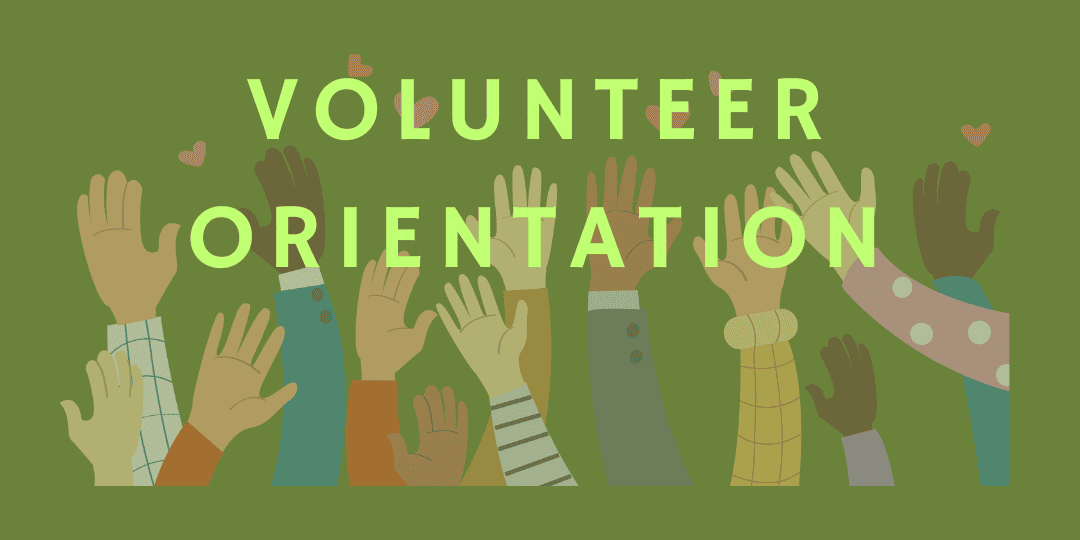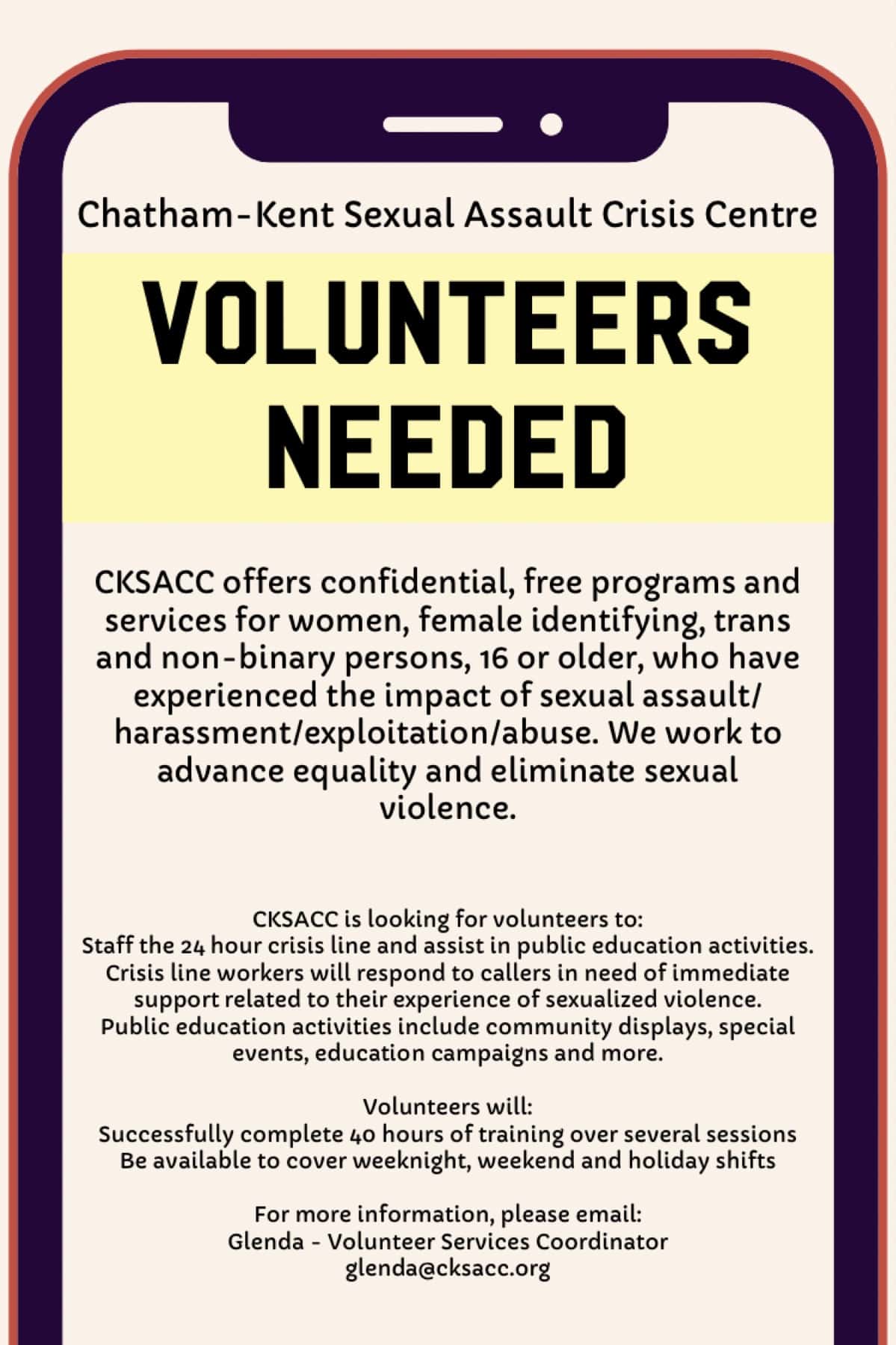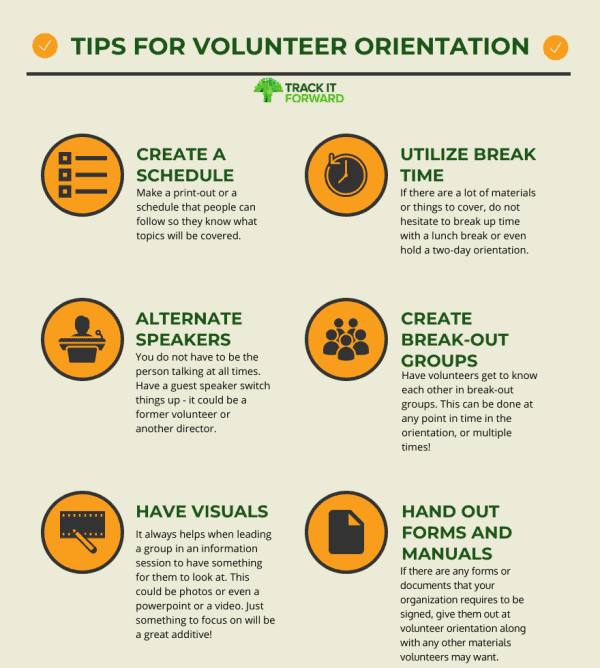Last updated on April 22nd, 2024 at 03:07 pm
Imagine a society in which people come together to change the world, driven by a shared sense of purpose and passion that is embodied in volunteerism. Numerous charitable organizations, social causes, and community projects rely on volunteers as their unsung heroes. To reach their full potential, though, they require direction and guidance, just like any significant undertaking. This is the context in which volunteer orientation sessions are useful. The key components of volunteer orientation programs, such as orientation workshops for new volunteers, orientation sessions for community volunteers, and orientation sessions for volunteer recruits, will be covered in detail in this extensive book. Get ready to learn about the amazing field of volunteer orientation and leave feeling strong and motivated.
1. The Basis of Programs for Volunteer Orientation
The foundation for developing a robust and active volunteer community is volunteer orientation program. These initiatives aim to give both new and seasoned volunteers the resources, information, and motivation they require to leave a lasting impression. Let’s start by comprehending the fundamental components of these applications.

1.1 The Volunteer Orientation’s Goal
The noble goal of volunteer orientation programs is to inform, inspire, and orient volunteers. They provide information on the goals, principles, and standards of the organization, laying the groundwork for a fruitful volunteer experience. Here, when volunteers become aware of the causes they will soon be supporting, the emotional bond starts.
1.2 The Bond on an Emotional Level
The emotional bond that is forged at volunteer orientation is what drives it. Volunteers are inspired and educated by personal testimonies, narrative, and shared experiences. A compelling story can spur volunteers to action by inspiring them to commit their time and energy to the cause.
2. Workshops for New Volunteer Orientation
Any organization can benefit from the invigorating energy and unrealized potential of new volunteers. But the first steps they take on this path of giving back might be intimidating. This is the pivotal moment when orientation seminars become the lighthouses, embracing and assiduously incorporating these newcomers into the colorful fabric of the volunteer community.
2.1 Creating the Ideal Workshop for Orientation
Workshops for orientation should be carefully planned to meet the specific requirements of incoming volunteers. To create an engaging and instructional experience, they ought to mix interactive exercises with educational seminars. The organization creates the conditions for a fruitful and long-lasting volunteer connection by doing this.
2.2 Encouraging a Feeling of Acceptance
The establishment of a sense of belonging is one of the main objectives of an orientation workshop for new volunteers. This is accomplished by acquainting them with the culture, principles, and larger volunteer community of the organization. New volunteers are more likely to stay involved and committed if they feel like they are a part of something larger.
2.3 The Influence of Individual Narratives
Personal narratives have the capacity to arouse intense feelings and leave a lasting impression. Experienced volunteers and beneficiaries can share their own stories during orientation courses, demonstrating the transformative potential of volunteering. For new volunteers, hearing firsthand stories of advancement and change may be quite inspiring.
3. Orientation Session For Community Volunteers
The backbone of grassroots efforts are community volunteers, who frequently have a steadfast enthusiasm for causes and local issues that are near and dear to their hearts. They are in a unique position to bring about long-lasting change in their areas because of their strong ties to the community. But in order for this enthusiasm to become meaningful action, orientation programs that are specially designed to meet the requirements of community volunteers must be provided.
- Recognizing Local Needs: Community volunteers are motivated by a deep awareness of the particular problems that impact their local communities. An efficient volunteers orientation program should take note of this knowledge and go deeper into the opportunities and difficulties that are unique to the area. It ought to give them thorough understanding of the particular requirements of the society, enabling them to better direct their energy toward the most urgent problems. By doing thus, these meetings act as a kind of emotional bridge, bringing volunteers and the most pressing issues facing their community together.
- Building a Sense of Ownership: Volunteers in the community are stakeholders in the very community they work to better, not merely participants. During volunteers orientation program, they should stress how important it is for them to be community catalysts. When they see that they are not just solving problems but also taking charge of the development and well-being of their own area, an emotional bond forms. This feeling of guardianship has the potential to be a strong incentive, inspiring volunteers to give their all with their time and efforts.
3. Creating Partnerships: Collaborating with neighborhood groups, residents, and other stakeholders is frequently necessary for effective community volunteering. Volunteers should leave orientation sessions with the information and abilities needed to establish and maintain these crucial alliances. They ought to emphasize the value of cooperation and connectivity, demonstrating how joint efforts can increase the influence of their work. The emotional bond grows when community volunteers recognize that they are essential components of a greater ecosystem and that, when united, they can effect significant positive change.

- Accepting the Ripple Effect: Stressing the impact of community volunteers’ activities on others is a very emotional part of orientation meetings. Volunteers ought to be informed about the potential for their efforts to set off a domino effect that will alter their community for the better and persist for a long time. Their commitment to the cause and the community is further cemented by their realization of the significant impact they can have, not just in the short term but also for future generations. This long-term outlook fosters a sense of purpose that can motivate consistent dedication.
- Celebrating Success Stories: Telling the tales of past volunteer endeavors in the community can be a potent emotional trigger. These narratives ought to highlight the observable, beneficial improvements made by neighborhood volunteers. Volunteers are shown the immediate results of their work by providing examples of better living conditions, safer communities, and more opportunities for the local populace. These success tales strengthen the bonds among volunteers by fostering a sense of accomplishment and a common goal.
Community volunteer orientation programs need to be thoughtfully designed to appeal to each volunteer’s distinct traits and driving forces. These sessions may effectively channel the passion and excitement of community volunteers by recognizing local needs, establishing a sense of ownership, building relationships, embracing the ripple effect, and celebrating success stories. Their dedication to their work and the community can be strengthened by this emotional connection, which guarantees that the people they help will continue to benefit from their volunteer work. Here are a few more helpful pointers:
3.1 Recognizing Regional Needs
Volunteer orientation program in the community is a unique position to meet certain needs in the community. Orientation sessions ought to cultivate a sense of duty and ownership by offering insights into the opportunities and difficulties within their community. This knowledge acts as a strong incentive to take action.
3.2 Establishing Collaborations
Working in tandem with neighborhood groups and residents is a common component of successful community volunteering. Volunteers should receive guidance on establishing and sustaining these vital relationships during orientation sessions. When volunteers understand their part in bringing about positive change in their community, they experience a sense of empowerment.
3.3 The Effect of Ripples
Emphasizing the positive impact of volunteerism in the community can be an effective strategy. It is important to demonstrate to volunteers how their efforts can bring about significant and enduring change in their community. Being aware of the significant influence they can have can foster a strong emotional bond between them and their profession.
Volunteer
A crucial part of every organization’s volunteer engagement strategy is providing orientation workshops for prospective volunteers. New hires frequently offer a plethora of special knowledge, abilities, and experiences that can greatly advance the goals of the company. These meetings are the first steps toward integrating these important people into the volunteer community and making sure that their full potential is realized.
The urge to put their specific abilities to use in any field—be it healthcare, education, technology, or another—draws recruits to volunteer work. To ensure that they can easily transition into their volunteer jobs, it is crucial to provide orientation courses that address their unique needs. These training sessions ought to be planned with the goal of maximizing volunteer recruits’ potential and assisting them in developing into important assets for the company.
- Acknowledging talents and Expertise: New volunteers bring a variety of talents and knowledge that can be very helpful to the organization. Understanding and appreciating these abilities is the first step towards a successful orientation session. Acknowledging their expertise and professional accomplishments gives them a feeling of purpose in their volunteer work in addition to validating their contributions. Recruits are strongly motivated to use their skills for the greater good by this acknowledgment.
2. Integration into the Organization: New volunteers might not be acquainted with the procedures, culture, or particulars of volunteering of the organization. The goal of orientation programs should be to help new hires fit in with the organization’s structure. This entails outlining the goals and principles of the organization as well as the duties and responsibilities of volunteers. Organizations may cultivate a sense of commitment and belonging among recruits by guaranteeing that they feel appreciated and integrated from the start.
3. The Power of Mentorship: Recruits’ acclimatization process can be greatly accelerated by assigning them to experienced volunteers or staff members as mentors. Through mentoring programs, new hires can get direction, assistance, and a point of contact for any queries or worries they may have. This individualized approach can help recruits feel more bonded to one another, more confident, and more capable of adjusting to their new jobs.
4. Goal-Setting and Professional Development: Talk about the particular objectives and demands placed on volunteer recruits during orientation meetings. This can include both immediate goals and long-term chances for professional growth inside the company. Recruits are more likely to get emotionally engaged in their volunteer work and the organization’s mission when a clear route for growth and impact is provided.
5. Good Communication: A successful orientation session for prospective volunteers depends on effective communication. They must be able to communicate their thoughts, impart their knowledge, and work together with staff members and other volunteers. Educating new hires on effective communication techniques, such as how to navigate the channels and procedures of the company, enables them to participate actively from the outset.
Volunteer recruit orientation programs should be carefully planned to maximize each volunteer’s special talents, abilities, and potential. These sessions make sure that recruits are not only valuable assets to the organization but also emotionally connected to their roles and the mission they serve. They do this by identifying their abilities, integrating them into the organization, offering mentorship, setting clear goals, and fostering effective communication. Their dedication is motivated by this emotional bond, which makes them essential contributors to the volunteer community.

4.1 Acknowledging Proficiency and Knowledge
Prospective volunteers frequently have a plethora of experience in their industries. To optimize their impact, orientation sessions ought to center on identifying and utilizing these skills. Recruits may have a great feeling of purpose and worth as a result of this acknowledgment.
4.2 Assimilation into the Group
It is imperative that new volunteers are smoothly included into the organization’s hierarchy. Clear objectives, designated responsibilities, and mentorship programs can help achieve this. When new hires feel like essential members of the team, their sense of emotional connection and belonging is strengthened.
4.3 The Mentoring Power
It might be a game-changer to pair new volunteers or staff members with seasoned volunteers or mentors. Through mentoring, new hires can swiftly adjust to the culture of the company, build their confidence, and comprehend its dynamics. This individualized approach promotes a feeling of solidarity and assistance.
5. Measuring Volunteer Orientation Program Success
Determining precise criteria and periodically evaluating the efficacy of volunteer orientation programs are necessary to gauge their performance. Through this approach, businesses can assess the effectiveness of their programs and make the necessary adjustments to guarantee that their objectives are met. Organizations may guarantee the continued engagement, education, and empowerment of volunteers through orientation programs by implementing key performance metrics and carrying out regular reviews. This proactive strategy advances the organization’s overall goals and success in addition to improving the volunteer experience.
5.1 Significant Measures
Numerous indicators, including volunteer satisfaction surveys, retention rates for volunteers, and the quantity of hours of service performed, can be used to assess the effectiveness of orientation programs. Organizations can validate the impact of their programs and strengthen volunteers’ emotional commitment to the cause by showcasing measurable outcomes.
5.2 Continued Assessment
The characteristic of effective volunteer orientation programs is continuous development. It is really helpful to receive regular feedback from program leaders and volunteers. This demonstrates the organization’s dedication to offering the greatest volunteer experience while also ensuring the program stays relevant.
6. Emotional Engagement Case Studies
Presenting actual instances of how volunteer orientation programs have effectively created emotional bonds with volunteers is the goal of Case Studies in Emotional Engagement. Organizations can demonstrate the effectiveness of their initiatives in inspiring, encouraging, and keeping volunteers by exhibiting these cases. These case studies are potent testimonials that show the real and long-lasting benefits of well-thought-out orientation programs. They also act as a catalyst for others to follow suit and highlight the significance of promoting emotional engagement among volunteers.
6.1 Habitat for Humanity Case Study
An example of success is the orientation session offered by Habitat for Humanity. They make use of first-person accounts from homeowners who have had their lives changed by the organization’s efforts. These narratives strike a deep chord with new volunteers, giving them a strong sense of direction and community.
6.2 Case Study: International Medical Corps
Medical volunteers receive thorough orientation from Doctors Without Borders. By highlighting the significance and urgency of their work in disaster areas, they draw on the recruits’ strong humanitarian passion and professional abilities.
6.3 The American Red Cross Case Study
The American Red Cross has developed a virtual orientation experience by use of technology. Volunteers have a taste of what they will encounter during disaster response through interactive simulations and real-life scenarios, which helps them emotionally prepare for the challenges that lie ahead.
Conclusion
The cornerstone of a flourishing volunteer community is its volunteer orientation program. They act as a doorway to purpose, empowerment, and emotional connection. These initiatives are an essential resource for recruiting and enlisting new volunteers as well as community volunteers.
We invite you to investigate these programs in your own setting as we come to the end of our tour through the realm of volunteer orientation. Make the most of the emotional bond they produce to build a more robust and dedicated volunteer community. One volunteer at a time, we can transform the world if we work together.
We’ve covered the fundamentals of volunteer orientation programs, the unique requirements of new recruits and community members, and how to assess the effectiveness of these initiatives in this extensive guide. Effective orientation can lead to emotional engagement, as demonstrated by case studies from real-world situations.
It’s up to you now. Leverage volunteer orientation programs’ potential to empower, inform, and motivate volunteers. Allow the feelings they arouse to serve as the catalyst for constructive transformation and societal influence. Volunteer orientation is a journey of the heart and soul that unites people to a higher purpose; it’s not merely a program.

Love love love love love! Rachelle Castor Aubrey Palmer Bills Liz Kirkby